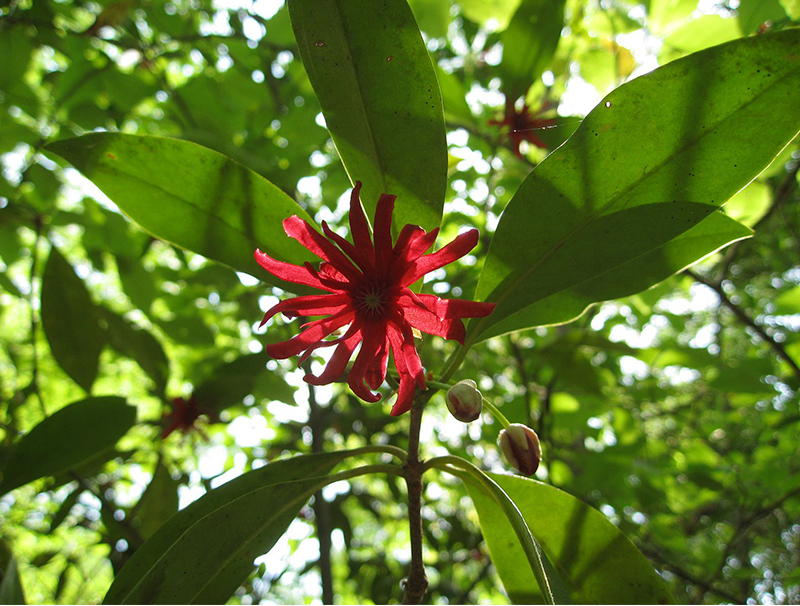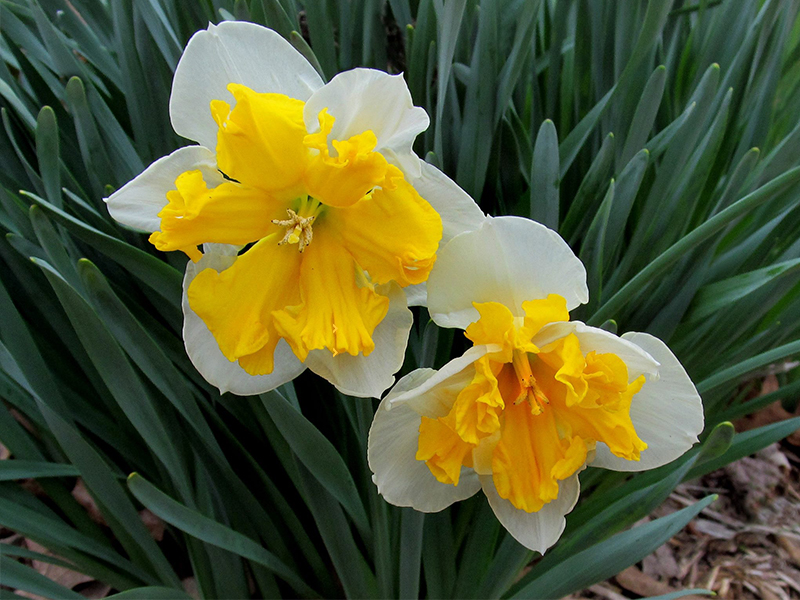



July
- Look at your azaleas to see if they are getting enough sun during July and August when they are setting their buds. High branches are okay, lower ones will inhibit flowering. Water well.
- Some perennials go dormant now through August, such as columbines, maiden hair fern and amaryllis. Don't give up on them.
- Nurseries have great sales in July and August.
- It's normal for oleander leaves to yellow and drop off at this time of year.
- Except for vegetables, it's too hot for serious fertilizing.
- Sow cosmos seeds. They germinate readily.
- Prepare beds for fall vegetable garden to be planted in late August and September. Seeds can be started in flats.
August
- Walk around your yard and consider where you would like more shade. Make a note of where you night plant one or more trees.
- Even when it gets hot stay out of the water garden. The plants don't care for people that much!
- Try torenia in brightly shaded areas.
- Put in tomato plants for harvest in the fall. Shade them with a “tent.”
- Plants that are wilted in the evening may be reacting normally and not need more water. Plants that are still wilted in the morning are likely heat/drought-stressed.
- Water as early in the day as possible to reduce water loss from sprinklers by evaporation.


September
- This is the beginning of a delightful gardening season for the Upper Texas Gulf Coast area. As it gets cooler there is more rain (usually) and fewer insects.
- September thru January is a good time to plant nearly everything – trees, shrubs, perennials and bulbs. Many need the cold to establish strong root systems.
- Cut back on watering as temperatures drop. Lawn problems are often the result of over watering. Spot water where necessary.
- On account of our heavy rains raised beds are best for this area so that plant roots don't drown. 5”- 8” above the surrounding ground is good.
- Early in the month is a good time to start a fall/winter vegetable garden. Among those to include are cauliflower, beets, cabbage, chard, collards, bush snap beans, lettuce and leeks.
- Plant societies will have good sales with unusual plants and often experts on hand to answer questions.
- The annual Bulb and Plant Mart is at the end of September. It's a wonderful event sponsored by the Garden Club of Houston. Fortune daffodils will naturalize here but tulips are annuals. There are also amaryllis, crinum lilies, hyacinths, irises and small bulbs for sale and plants, shrubs, trees and vines.
Conservation List
For Coastal Prairie Dist IV:
Elmendrof's onion
(Allium elmendorfi)
Texas windmill grass
(Chloris texensis)
Coastal Gayfeather
(Liatris bracteata)
Branched Gayfeather
(Liatris cymosa)
Grand Prairie Evening Primrose
(Oenothera pilosella)
Correll's False Dragonhead
(Physostegia correllii)
Chapman's Orchid
(Platanthera chapmanii)
Welder Machaeranthera
(Psilactis heteracarpa)
Houston Daisy, Houston Machaeranthera
(Machaeranthera aurea)
Houston Meadow Rue, Texas Meadow Rue
(Thalictrum texanum)
Threeflower Thurovia
(Thurovia triflora rose)
Endangered:
Texas Prairie Dawn, Texas Bitterweed
(Hymenoxys texana)
Texas Trailing Phlox
(Phlox nivalis)
Navasota Ladies Tresses
(Spiranthes parksii)